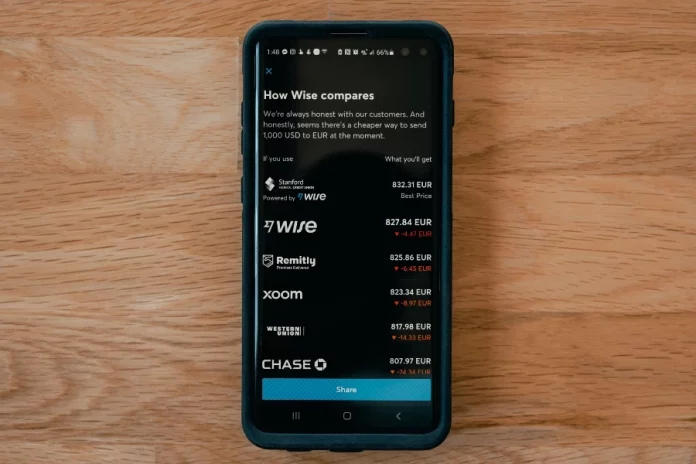Digital banks have been gaining traction in recent years due to their lack of fees and physical bank queues. With the surge of mobile banking apps, how do these startups make money? In essence, it is a waiting game; most digital banks have opted to focus on expansion rather than profitability. Initially, they aim to attract as many new customers as possible with the hope that they will eventually figure out how to monetize them in the future. The ones that choose this strategy initially put more emphasis on how to create a mobile banking app- with this can help Jatapp, and how to encourage experimentation and rapid user adoption. Nevertheless, there are many ways to make money on banking applications that are already working successfully.
Ways To Earn Digital Banks
There are many digital banking services in which they earn money. Listed below are the top sources of income for banking app owners.
Attracting investors
Mobile banking apps have been on the rise for quite some time now. What’s even more intriguing is that venture capital firms are lining up to invest in these digital banks worldwide, with the potential of making them unicorns sooner rather than later. Revolut, Chime, Starling, N26, Wise, Nubank, and SoFi are just a few of the mobile banking apps that have each raised over a billion dollars. This means mobile banking apps can now soar as global companies with staggering amounts of investment – all without expecting any form of profitability.
Credit cards
Mobile banking solutions are making it more convenient for customers to access credit cards. A mobile bank app can provide customers with the ability to apply for a credit card and monitor their spending, payments, and fees easily from anywhere with an internet connection. With mobile banking, customers can even avail of attractive rewards that many credit card providers offer in the form of cashback or air mile points. In addition, banks have also become smarter by providing access to budgeting tools and personalized mobile notifications that alert clients on interest rate changes or their due dates in a timely manner.
Interchange fees
As mobile banking solutions become more prevalent, people have come to expect that digital banks will offer mostly fee-free accounts, which include ATM withdrawals, transfers, transactions, cards, and maintenance fees. This provides great convenience to customers who simply want to use the services of mobile banks for day-to-day financial transactions. However, there is a hidden fee levied on mobile bank users and merchants; interchange fees that Visa and Mastercard charge sellers whenever a transaction is conducted with a card. This usually results in smaller stores opting out from taking card payments; their thin margins don’t account for an extra fee on each purchase. In fact, even though mobile bank customers may not be directly impacted by the interchange fees, these fees still reach mobile banks through commissions paid out by Visa or Mastercard.
Commercial invoices for business
SMEs are notoriously underserved by traditional banks, and mobile banking solutions can be a great way to provide financial services that help foster the growth of small and medium-sized enterprises. Offering free accounts with additional services available for a fee is one popular strategy, as is setting up mobile business accounts where users need to pay to access them. By meeting the rise in demand for mobile banking, banks can support entrepreneurs’ dreams of owning their own businesses and allow them to manage their finances.
Commissions for withdrawals and transfers
While there are a few drawbacks to offering credit cards, such as interchange fees and other fees, they can often be very profitable for digital banks. With the rise of neobanking, more and more traditional banks have started partnering with digital banks so they can include credit cards in their portfolio. In some areas, the prevalence of credit cards means that it is highly worthwhile for digital banks to offer them in their services – even if they do not have a banking license themselves. By collaborating with licensed partners, neobanks can get around regulations and start offering customers access to credit cards that may be beneficial for them.
Premium accounts
Offering premium accounts is a great way for fintech companies to turn their app users into paying subscribers with attractive features like metal cards, travel and overseas medical insurance, better savings rates, and lounge passes. By giving customers two or three different tier options, companies increase the chance of driving more revenue. While free accounts can be costly, especially if you have a decent amount of users such as Monzo, who were reportedly spending £30+ per customer, it’s important to realize that premium accounts are not always as profitable as you may think for a company either.
Overdrafts
Overdrafts are a hugely profitable source of revenue for banks, with the Brookings Institution reporting that overdraft fees accounted for over half the net income for six selected banks. Even more concerningly, their research found that the 9% of people who overdraw their account ten times a year contributed almost four-fifths of all fees collected. Digital banks such as Ally have responded to this situation by scrapping their overdraft fee in an effort to help customers during the pandemic. Despite this, traditional and digital banks can still make easy money from overdrafts, with one single oversight potentially costing an individual $35!
Marketplace
The marketplace concept can bring together a diverse range of services that appeal to customers’ personal or business demands. It creates an interconnected ecosystem where customers can quickly find the right service provider and banks benefit in the form of referral commissions. Customers will no longer have to hop across multiple websites to get quotes for services – everything is easily available in one spot, saving them both time and effort. The marketplace can include utilities such as HR, mortgages, loyalty programs, INVESTING, communications tax, legal payments, insurance, and more. This type of product integration brings convenience and preserves valuable customer relationships for banks whilst providing customers access to a range of services to meet their needs.
Conclusion
In fact, there are even more sources of monetization of banking applications, but the ones listed above provide decent income without requiring the development of a stationary network of bank branches. All you need to start is to come up with a quality plan and create an application. For example, you can order custom development of your app from JatApp. To know more about what they can offer for fintech app development, visit their website now!












